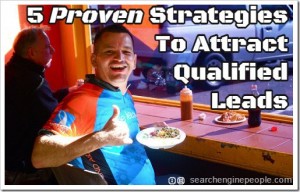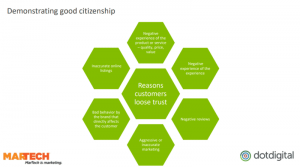
Founded in 1948, Ogilvy & Mather has worked with some of the biggest brands in the world: Ford, IBM, Nestlé, IKEA, American Express, and so on. They’ve been around the block a few times, continually innovating and reinventing their marketing efforts.
In early November, Ogilvy released its latest red paper, “The Digital Social Contract,” a play off Rousseau’s The Social Contract. The paper aims to, “uncover the unspoken social rules governing the digital world and explain to brands how to thrive in it.”
If you have the time, the 110-page paper is worth a read in its entirety. But… you probably don’t have the time. So, in that case, here’s what you need to know…
The Six Big Ideas
The subheads are directly from Ogilvy. The text beneath is our own (BuzzPlant) experience and observations.
#1 Pure passion trumps production.
Gary Vaynerchuk is a testament to the supremacy of passion. While he now adds significant production value to many episodes of the #AskGaryVee show, that hasn’t always been the case. In the early days, Gary’s videos were very raw – oftentimes just him talking directly into a webcam. Countless other YouTube stars began their careers this way, too. Production doesn’t matter so much when the content is excellent and there’s plenty of passion.
#2 Community is king.
The broadcast days are over. Today’s brands can’t just pump out content. They have to listen, respond, and engage with users in order to be successful.
#3 Engagement-driven, not hit-driven.
Again, you can’t just throw content and advertising budgets at an audience. Brand communications are a two-way street now.
#4 Think small to be big.
Brands can – and should – drill down to a core audience. Novelist Kurt Vonnegut wrote, “Write to please just one person. If you open a window and make love to the world, so to speak, your story will get pneumonia.” The same could be said of doing social media. Figure out your target, and speak directly to them. Your message will be authentic; it will resonate; others will notice and get on board.
#5 Make universes, not content.
You can’t pretend that your Instagram, YouTube channel, and website are three totally different platforms. Many users will engage with all three, so make the experience worthwhile for them.
#6 Revenue grows when it disappears.
In other words, brands can’t just throw money at creators, and ask them to “sponsor” their story or partner with them. The narrative of the brand and the narrative behind the creator’s platform have to mesh.
Where do you see digital content and marketing headed?
Chime in with your thoughts on Ogilvy’s six big ideas. For starters… are you making “content” or a “universe?”
(100)






